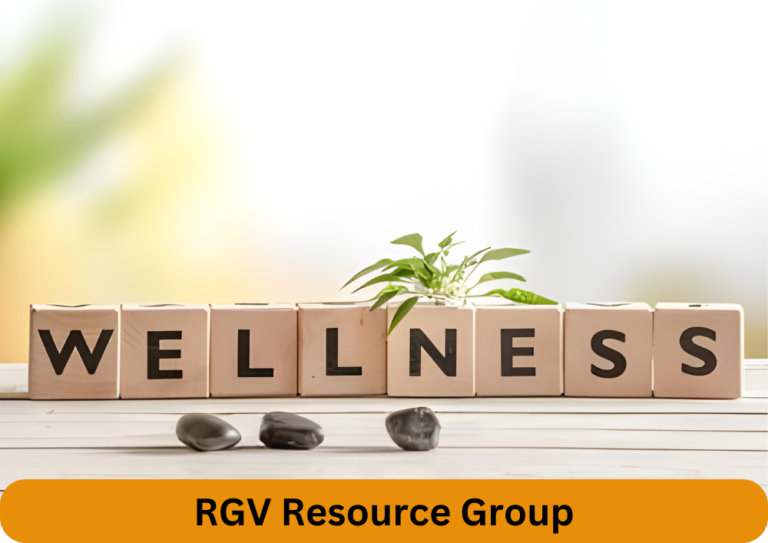Introduction:
The importance of putting wellness first has never been greater in the fast-paced world of today, where stress is a constant companion and demands frequently seem never-ending. A holistic approach that takes into account all facets of our lives—physical, mental, emotional, and spiritual—wellness goes beyond physical health. We’ll explore the deep relationship between wellness and a happy life in this extensive guide. We’ll look at the components of wellness, how it affects life satisfaction, and methods for improving wellness, overcoming obstacles, and preserving long-term health. We’ll also introduce you to the RGV Resource Group, where you can take advantage of special wellness deals, network with encouraging people, and even discover how to become financially independent by referring others to wellness programs.
Understanding Wellness

1. Determining the True Meaning of Well-Being?
Being well means not just not being sick; it means living a full life on all levels—physical, mental, emotional, and spiritual.
It includes being in a condition of maximum health, energy, and wellbeing.
2. Physical, Mental, Emotional, and Spiritual Aspects of Well-Being
Maintaining our physical well-being entails feeding our bodies well, exercising, and getting enough sleep.
Retaining a positive outlook, controlling stress, and promoting cognitive health are the main goals of mental wellness.
Developing resilience, understanding and regulating our emotions, and promoting positive relationships are all components of emotional wellness.
Finding meaning and purpose in life, making a connection with something bigger than ourselves, and taking care of our inner spirit are all components of spiritual wellness.
3. The Significance of Holistic Health: Reaching Equilibrium in Every Aspect
To live a happy and meaningful life, one must attain balance in all facets of wellness.
Ignoring any facet of wellness can result in imbalances that impact one’s general state of well-being and contentment with life.
The Impact of Wellness on Life Satisfaction

1. Physical Well-Being: The Impact of Health on Satisfaction
Physical well-being is the cornerstone of total wellness and is essential to a happy existence.
Increasing energy, vitality, and happiness is a result of eating well, sleeping enough, and engaging in physical activity.
2. Mental Wellness: The Role of Mindset in Creating a Fulfilled Life – Mental wellness entails developing resilience in the face of adversity, a positive outlook, and effective stress management.
Having an optimistic view on life can help you become more resilient, develop better problem-solving techniques, and enjoy life more overall.
3. Emotional Wellness: Managing Stress and Cultivating Happiness – Developing positive relationships, discovering joy and fulfillment in life, and comprehending and controlling our emotions are all aspects of emotional wellness.
Developing emotional resilience and engaging in self-care practices can result in increased contentment, happiness, and general wellbeing.
Techniques for Improving Well-Being:

1. Fitness and Diet: Establishing a Basis for Health and Wellness
Maintaining optimum health and well-being requires a balanced diet and regular exercise.
While a healthy diet provides the necessary nutrients for overall wellness, exercise also helps lower stress, elevate mood, and increase energy levels.
2. Mindfulness and Meditation: Fostering Inner Calm and Clarity – Mindfulness techniques like yoga, deep breathing, and meditation can ease stress, sharpen focus, and enhance emotional health. Increasing awareness, acceptance, and inner peace can result from incorporating mindfulness into daily life.
3. Social Connections: The Power of Strong Relationships in Wellness – Emotional well-being and life satisfaction depend on fostering and establishing healthy relationships with friends, family, and neighbors.
Having social connections gives one a sense of community, support, and encouragement—all of which are critical for general wellbeing.
Overcoming Obstacles to Well-Being:
1. Typical Barriers to Wellbeing: Recognizing and Removing Them
– Time restraints, low motivation, and outside stressors are common barriers to wellbeing.
– Achieving long-term wellness objectives and overcoming obstacles require recognizing and resolving these barriers.
2. Developing Resilience: How to Recover from Setbacks – Resilience is the capacity to overcome hardship and adjust to difficult situations. Building a growth mindset, asking for help when you need it, and taking lessons from your mistakes and setbacks are all part of becoming resilient.
3. Asking for Assistance: The Value of Expert Assistance in the Wellness Process
Consulting therapists, counselors, or other medical professionals can be helpful in addressing mental health issues and creating coping mechanisms.
Asking for assistance is a show of strength and can be very helpful in providing direction and support when things get tough.
Sustaining Health for Extended Satisfaction

1. Establishing Sustainable Habits: Integrating Wellness into Everyday Life – Establishing sustainable habits entails introducing tiny, gradual adjustments to everyday routines and behaviors.
Establishing long-term wellness practices that enhance general wellbeing requires tenacity and consistency.
2. Continual Development: The Evolution of Wellness Practices – Wellness necessitates constant development and adaptation because it is a journey rather than a destination.
Seeking out new experiences, education, and personal development endeavors on a constant basis can improve our quality of life and lead to long-term satisfaction.
3. Celebrating Success: Acknowledging Achievements and Maintaining Motivation – Highlighting any kind of success, no matter how minor, can increase drive and reinforce constructive actions.
– Acknowledging advancements and successes along the path to wellness can motivate ongoing work and dedication to one’s own health.
Conclusion

In summary, the cornerstone of a happy and fulfilling life is wellness. People can unleash their potential and live healthy, happy, fulfilled lives by putting their physical, mental, emotional, and spiritual well-being first and putting strategies in place to improve wellness in each area. Join the RGV Resource Group right now to take advantage of special wellness deals, make connections with encouraging people, and start your path to a happier, healthier life.





